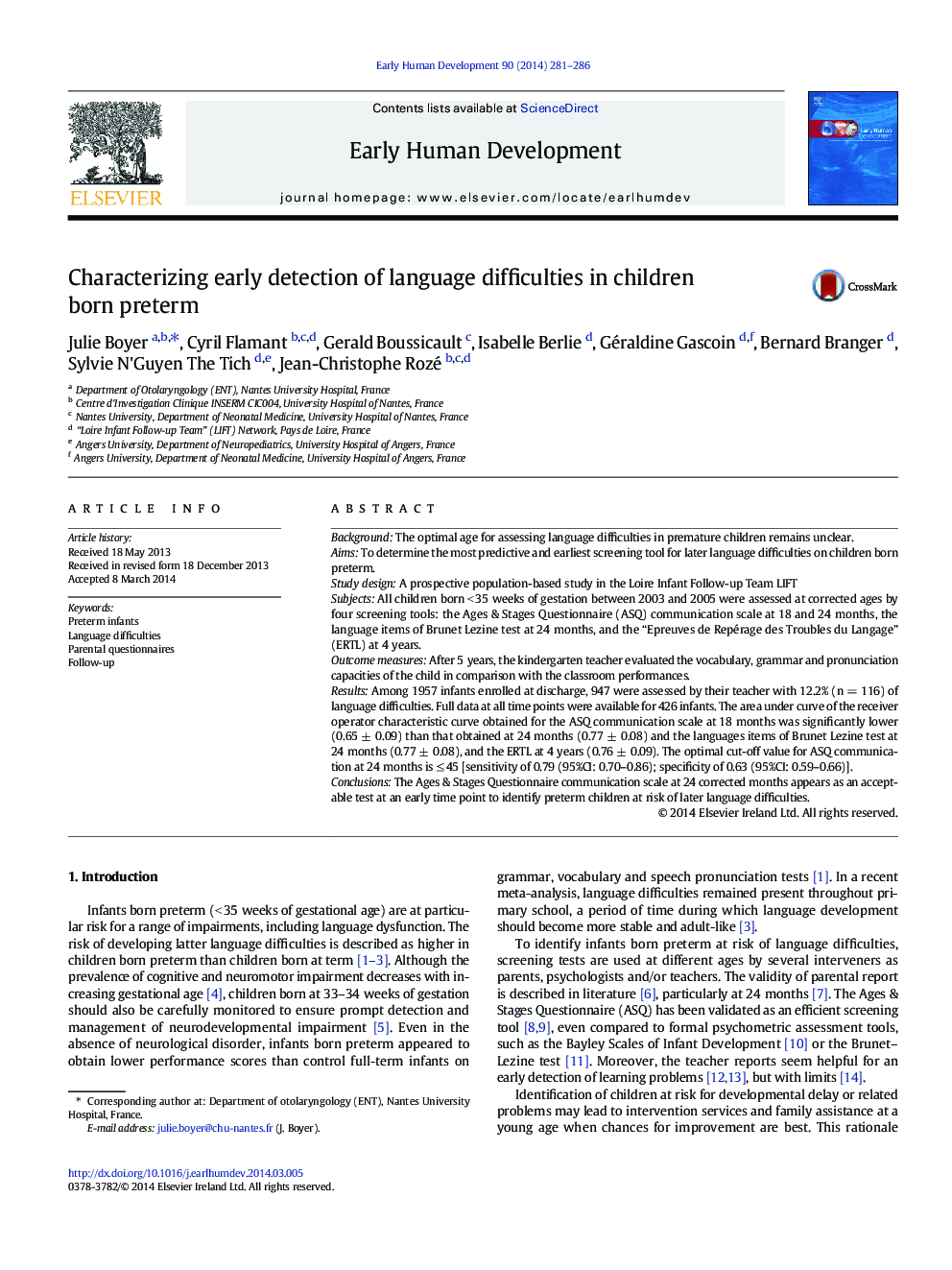| Article ID | Journal | Published Year | Pages | File Type |
|---|---|---|---|---|
| 3917050 | Early Human Development | 2014 | 6 Pages |
BackgroundThe optimal age for assessing language difficulties in premature children remains unclear.AimsTo determine the most predictive and earliest screening tool for later language difficulties on children born preterm.Study designA prospective population-based study in the Loire Infant Follow-up Team LIFTSubjectsAll children born < 35 weeks of gestation between 2003 and 2005 were assessed at corrected ages by four screening tools: the Ages & Stages Questionnaire (ASQ) communication scale at 18 and 24 months, the language items of Brunet Lezine test at 24 months, and the “Epreuves de Repérage des Troubles du Langage” (ERTL) at 4 years.Outcome measuresAfter 5 years, the kindergarten teacher evaluated the vocabulary, grammar and pronunciation capacities of the child in comparison with the classroom performances.ResultsAmong 1957 infants enrolled at discharge, 947 were assessed by their teacher with 12.2% (n = 116) of language difficulties. Full data at all time points were available for 426 infants. The area under curve of the receiver operator characteristic curve obtained for the ASQ communication scale at 18 months was significantly lower (0.65 ± 0.09) than that obtained at 24 months (0.77 ± 0.08) and the languages items of Brunet Lezine test at 24 months (0.77 ± 0.08), and the ERTL at 4 years (0.76 ± 0.09). The optimal cut-off value for ASQ communication at 24 months is ≤ 45 [sensitivity of 0.79 (95%CI: 0.70–0.86); specificity of 0.63 (95%CI: 0.59–0.66)].ConclusionsThe Ages & Stages Questionnaire communication scale at 24 corrected months appears as an acceptable test at an early time point to identify preterm children at risk of later language difficulties.
